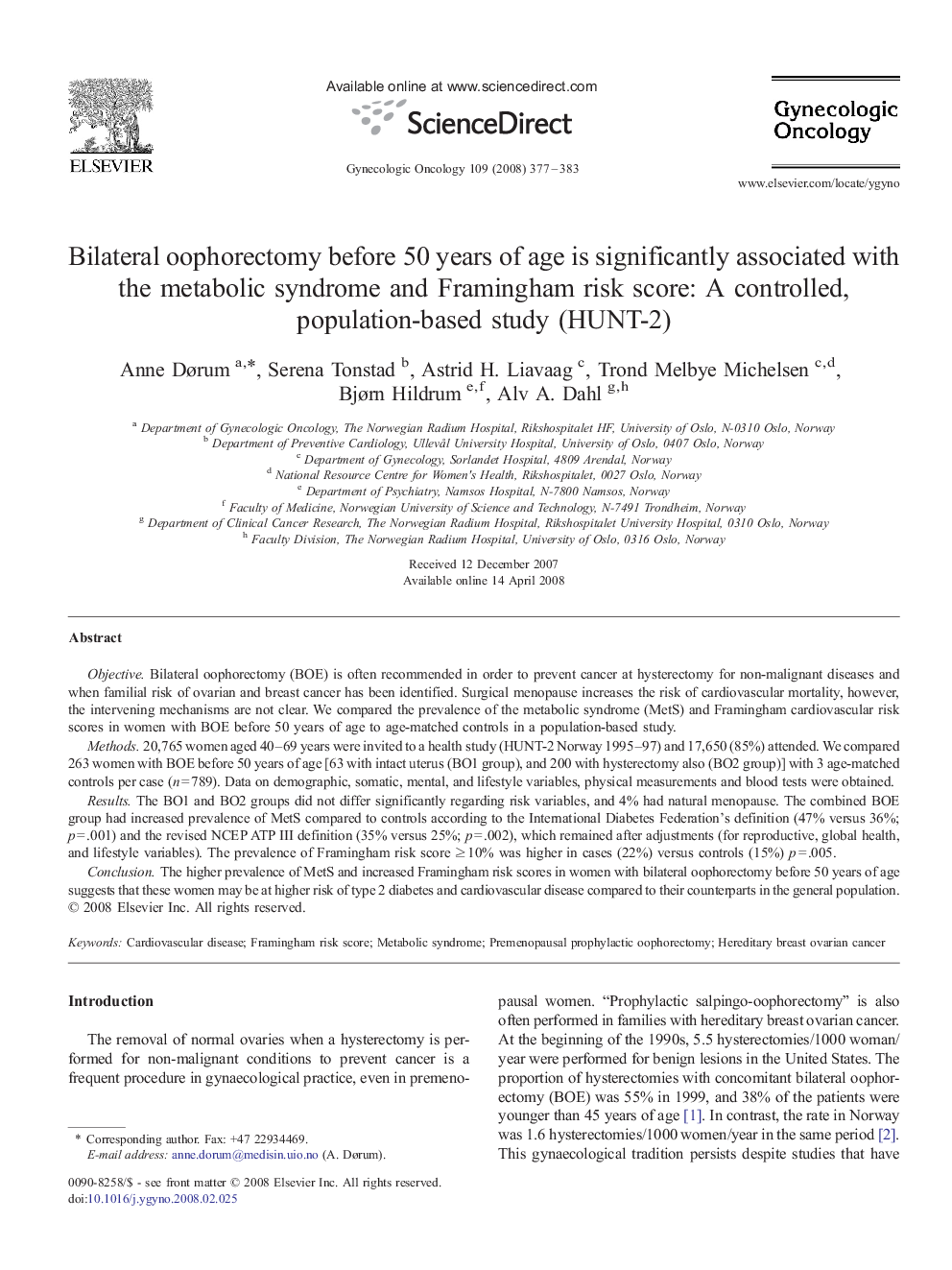| Article ID | Journal | Published Year | Pages | File Type |
|---|---|---|---|---|
| 3944673 | Gynecologic Oncology | 2008 | 7 Pages |
ObjectiveBilateral oophorectomy (BOE) is often recommended in order to prevent cancer at hysterectomy for non-malignant diseases and when familial risk of ovarian and breast cancer has been identified. Surgical menopause increases the risk of cardiovascular mortality, however, the intervening mechanisms are not clear. We compared the prevalence of the metabolic syndrome (MetS) and Framingham cardiovascular risk scores in women with BOE before 50 years of age to age-matched controls in a population-based study.Methods20,765 women aged 40–69 years were invited to a health study (HUNT-2 Norway 1995–97) and 17,650 (85%) attended. We compared 263 women with BOE before 50 years of age [63 with intact uterus (BO1 group), and 200 with hysterectomy also (BO2 group)] with 3 age-matched controls per case (n = 789). Data on demographic, somatic, mental, and lifestyle variables, physical measurements and blood tests were obtained.ResultsThe BO1 and BO2 groups did not differ significantly regarding risk variables, and 4% had natural menopause. The combined BOE group had increased prevalence of MetS compared to controls according to the International Diabetes Federation's definition (47% versus 36%; p = .001) and the revised NCEP ATP III definition (35% versus 25%; p = .002), which remained after adjustments (for reproductive, global health, and lifestyle variables). The prevalence of Framingham risk score ≥ 10% was higher in cases (22%) versus controls (15%) p = .005.ConclusionThe higher prevalence of MetS and increased Framingham risk scores in women with bilateral oophorectomy before 50 years of age suggests that these women may be at higher risk of type 2 diabetes and cardiovascular disease compared to their counterparts in the general population.
